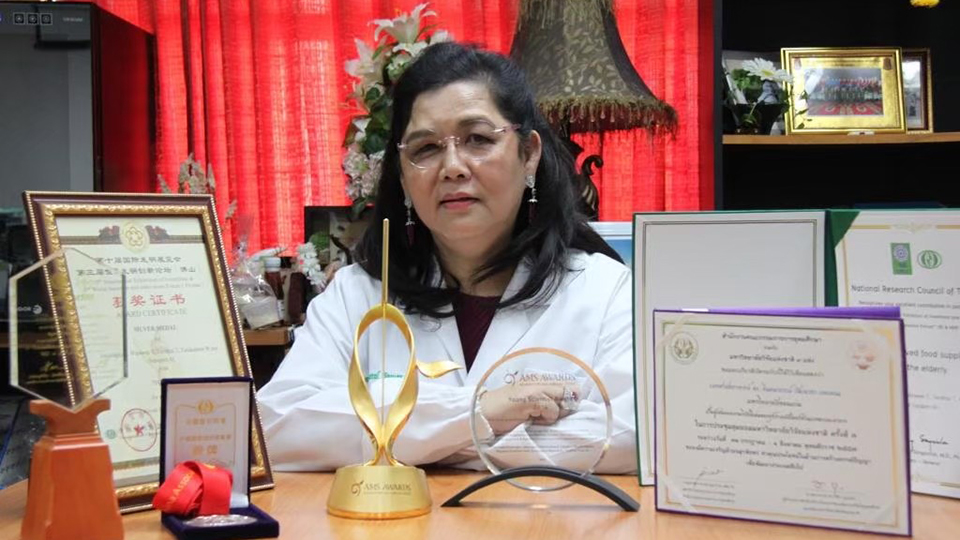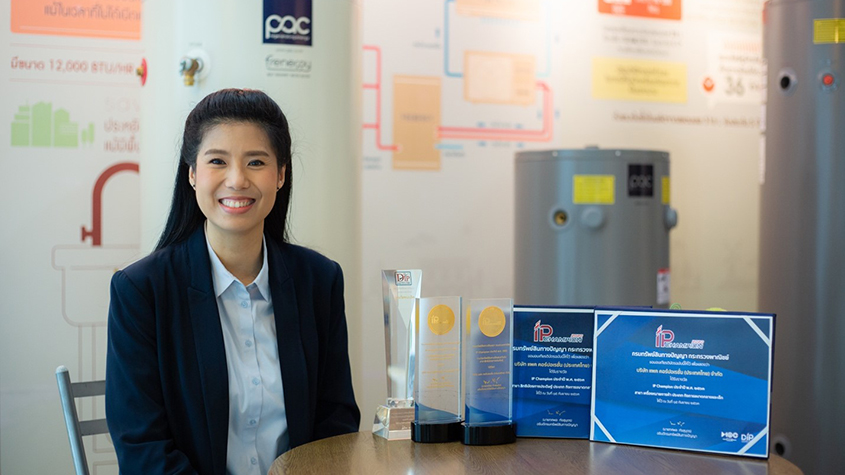Geographical Indications are signs awarded to products that have a specific geographical origin and have qualities or a reputation coming from that origin. Recent years have seen a sharp increase in GIs registration in ASEAN countries, and in particular in Thailand, with other member countries taking the Thai example as an inspiration.
The Department of Intellectual Property (DIP) of Thailand in cooperation with the World Intellectual Property Organization organized a workshop from 28 November-2 December 2022, with the assistance of the Korean Intellectual Property Office (KIPO) on brand strengthening and geographical indications in Thailand and some other Asia-Pacific countries. Bangladesh, Cambodia, Laos, and Samoa were invited to participate in the event.

GIs are protected by intellectual property rights, under the Geneva Act of the Lisbon Agreement on Appellations of Origin and Geographical Indications, administered by WIPO, and the World Trade Organization Agreement on Trade-Related Aspects of Intellectual Property Rights (TRIPS).

Thailand has a sui generis Geographical Indications Protection Act, adopted in 2003, which entered into force in 2004. Since then, the country has registered 171 Thai GIs from all of its 77 provinces, reaching its goal to have at least one GI per province.
Among those, 19 GIs are registered for rice, 82 for fruits and vegetables, 15 for silks and cotton, and 2 for wines and spirits. According to DIP, some 100 more GIs are in the registration pipeline.
Thailand has also registered 18 GIs coming from 9 countries. Some Thai GIs are registered in Europe, China, Japan, VietNam, Cambodia, Indonesia, Malaysia, and India.
Thai GIs of a High-Value for Communities in Thailand
According to a presentation made by Monchanok Tanasanti, Senior Trade Officer and Head of the GI marketing and Promotion Section at DIP, Thai GIs generate around Thai Baht 40,000 million (US Dollars 1,2 billion) a year for communities around the country.
It is the expectation that GIs will bring communities economic benefits and help people stay in their hometowns. In recent years, the office has been receiving an increasing number of GI registration requests.

Thailand registers GIs for agricultural and industrial products, as well as handicrafts, and offers support to producers with the registration, control system, marketing, and promotion.
Once the GI is registered, producers who agree to follow the producers’ manual and control plan for GI members, will be able to use the Thai logo label. Although the GI protection is not limited in time, the use of the GI logo has to be renewed every two years, she said. Qualified GI traders can also use the GI logo.
In Thailand, contrary to other countries, like in the European Union, producers do not need to set up an association through which the GI will be registered, Monchanok explained. Instead, producers usually group themselves into informal associations, or community associations, which register for the same product. Over 9,000 GI producers use the Thai GI logo, she said.
ThaiFex, the unmissable rendezvous for Thai GI Producers
Supporting Producers, Increasing GI awareness
DIP is seeking to support GI producers by creating market opportunities, bringing Thai GI producers to participate in ThaiFex, creating sales opportunity events such as GI market and GI Fest, and finding partners to support Thai GI Producers, such as TOPs supermarkets.

The office is also trying to increase GI awareness in the country, by promoting GIs through mass media, on the internet, social media, and in the print press, and by promoting GI locations as travel places. The lack of awareness about the quality and specificity of GI products is the main challenge for producers, she said. To help commercialize GIs on the international market, WIPO is currently designing a technical assistance program with DIP Thailand in the area of customer discovery and commercialization of GIs beyond the country’s borders.
The office also helps GI producers develop their products to match market needs, Monchanok added.
Promoting Bangladesh GIs with New Legislation and Rules
Bangladesh adopted the Geographical Indications Act in 2013, and geographical indications rules in 2015, and has 10 registered GIs: “Jamdani Saree”, “Bangladesh Hilsha Fish”, “Kirshapat Mango”, “Bijoypur White Clay”, “Dinajpur Katarivugh Rice”, “Bangladesh Kaljira Rice”, “Rangpur’s Shataranji”, “Rajshahi Silk Saree”, “Dhakai Muslin”, and “Bangladesh Black Tiger Shrimp”. Another 39 GI applications are currently being considered.

GI awareness is the main challenge experienced by the country, although GI awareness is slowly rising. Bangladesh is working on creating mass awareness and on adopting a branding mechanism for its GIs, nationally and internationally.
Among the measures the country is considering are the creation of a GI Code of Practice, the establishment of quality control mechanisms, the assessment of potential GIs, the registration of Bangladeshi GIs in other jurisdictions for creating potential markets worldwide, the support and empowering GIs producers’ communities, and building capacity among GI producers and authorized users.
With the help of WIPO, the Bangladesh IP Office (Department of Patents, Designs & Trademarks) is implementing two model-branding projects for the “Rangpur Shataranji” carpet, and the “Bangladesh Black Tiger Shrimp.”
Samoa’s Produces Set to Become Future Samoan GIs
The Samoa Intellectual Property Act of 2011 includes the protection of GIs, and the country has been a member of the Geneva Act of the Lisbon Agreement on Appellations of Origin and Geographical Indications since 2019.
A study commissioned by WIPO identified several local produces that could be candidates, such as nonu fruit, turmeric, and coconut. Samoa has a bountiful nature and many native products, but the challenge may be to find a unique link to the territory that would distinguish a national GI from equivalent products from other Pacific Islands.
There is however a rising interest from both producers and government in identifying and registering Samoa GIs. WIPO’s help is deemed necessary by the IP Office (Registries of Companies and Intellectual Property Division of the Ministry of Commerce, Industry, and Labour), in particular with capacity-building and technical support for GI Registry staff, and promotion of GIs to communities and the private sector.”
New GIs to be joining Kampot Pepper on the list of Cambodian GIs
Cambodia’s GI legislation dates back to 2014, and the registration procedure to 2016. The country has four GIs: “Kampot Pepper”, “Kampong Speu Sugar Palm”, “Koh Trung Pomelo”, and “Mondulkiri Honey”. Cambodia is also planning of registering additional products to the list, including Kampot Kep Salt, Takeo Giant River Prawn, and Kampot Kep Fish Sauce, in 2023.
One of the challenges met by GI producers is to keep constant compliance with the GI specifications. Another is the lack of competence and capacity for associations and producers to develop packaging and labeling. Another challenge is the enforcement of GI products to avoid copycats seeking to piggyback on the GI products’ reputation, leading to unfair competition both on the national and international markets. WIPO is working with the Department of IP Cambodia to address key issues faced by the fledgling GI system and complement it with other branding strategies.
There is a rising interest and awareness about GI products in the country and their potential for trade. The country expects more GIs will be registered in Cambodia soon.
Cambodia has been a member of the Geneva Act since 2018.
Laos Products expected to Benefit from GI Registration
Laos has had a regulation on GI since 2016, following IP legislation and a Ministerial Decision. Laos has been a member of the Geneva Act since November 2020.
The country has six national GIs: “Komaen Tea” from the Phongsaly province, “Khao Kai Noi Rice” from Houaphan and Xieng Khouang provinces, “Paksong tea”, “Bolaven Coffee” from Champasak province, and “Luang Prabang” and “Houaphanh silks”.
Other products are in the pipeline, such as Dak Jueng Ginseng, Phousan Tea, Xiengkhouang Silk, and La Hanam Cotton.
One of the challenges met by GI producers is the creation of an association, which is monitored by the government, and the marketing of the products. The six registered GIs have yet to benefit from their registration in the middle of the Covid-19 crisis, in 2020. WIPO is assisting the Department of IP in a brand development initiative for GIs.
The potential benefits of GIs in terms of reputation and economic output are nonetheless starting to raise interest from producers and provincial mayors.



